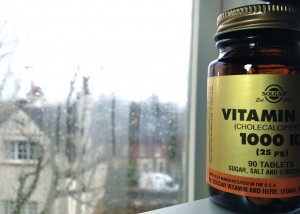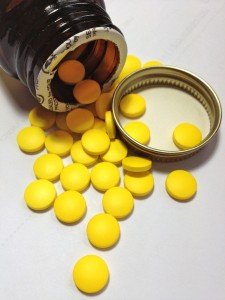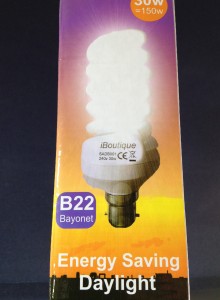It seems only pertinent at this time of the year when the sun is hibernating and the whites of our eyes are greying, to mention one of the hardest vitamins to uptake…the ‘sunshine vitamin’.
Vitamin D is a fat soluble. This is something I’m sure many people read and think ‘ah okay’ but just in case you don’t actually know what that means…it means that the vitamin is absorbed into the body along with fats through the intestine walls and also stored in fat in the body and is eliminated much more slowly than water-soluble vitamins (and therefore you can have too much of a good thing) but, crucially, this means you need to consume some fat to absorb the vitamins…think on.
The main benefit of Vitamin D is it works in conjunction with calcium and phosphorus to build strong bones and teeth. Recent research has shown that vitamin D is, however, no ordinary vitamin (because it’s not technically a vitamin but that’s another story…) and has a far reaching, vital role to play. Vitamin D is thought to be the access code, as-it-were, to the DNA options each and every cell has, and without vitamin D the cells cannot operate at optimum levels. Receptors that use vitamin D as their trigger are in every type of cell in your body from your vital organs to your bones. It is thought that the cells respond to a vitamin D trigger and open up their ability to fight infection, inflammation and a host of common chronic diseases like cancer, rheumatoid arthritis, diabetes, flu, eczema, dementia and heart disease. The MS Society’s recent research suggests a link between lack of vitamin D in early childhood, or even before birth, and an increased risk of developing MS later in life. Other developed diseases in children like rickets (weak muscles, soft bones) are linked directly to the lack of absorption of bone building minerals due to the absence of vitamin D. The elderly (especially those housebound or in care homes), or those for whom their beliefs require their skin to be completely covered, may also be susceptible. And, for ladies, bear in mind that as your oestrogen production declines you may need to consider a touch more vitamin D to give your body a helping hand with it’s calcium absorption.
Although your cells do have other ways to access their DNA, vitamin D is the most natural and efficient. So how can we make sure we get the RDA? Following are the EU recommended daily amounts for different ages:
0 – 12 months : 25µg/day (1000IU)
1 – 10 years : 50µg/day (2000IU)
11 – 17 years : 100µg/day (4000UI)
17+ : 100µg/day (4000UI)
µg means micrograms (one millionth of a gram, so how much of a vitamin is in the tablet). IU means international units (used for fat-soluble vitamins and states their potency).
The recommended amount varies so much from country to country, which makes sense for some places, but think about the fact that Canada has a RDA of only around 600IU. On the other hand an American organisation the Vitamin D Council http://www.vitamindcouncil.org/ says that a healthy human body utilises around 3000 – 5000IU of vitamin D each day, which is vastly higher than any recommended dose. Pregnant and lactating mothers needing a whopping 6000IU, they say. One of the UK’s leading nutrition experts, Patrick Holford http://www.patrickholford.com/ concurs that the RDA falls woefully short. The amounts need by children and adults coping with MS, cancer, heart disease or obesity may be double this. It’s worth noting that you can end up with dangerously high levels of calcium in your system from over intaking vitamin D supplements. Always check with a doctor before taking very high doses of, well, anything really!
Very few foods contain vitamin D. A few products are fortified with it like milk, cereals, margarine and spreads, but it occurs mostly in oily fish like wild salmon, herring, tuna and mackerel (including the tinned variety). Eggs, cod liver oil and mushrooms are also a source (shiitake – especially those dried in the sun – and white button mushrooms). Incidentally to reduce the loss of the vitamin in these foods cook them with no oil. Bake or grill instead of frying.
However, it is unlikely that you can get enough vitamin D through diet alone, and the best known method of getting your requirement of the vitamin is well documented – sunshine. A scant few minutes in the sun a day provides you with all the vitamin D you need. Ultra violet sun rays react with the oils and fats on, in and under the skin and produce the vitamin (specifically cholecalciferol – D3), which is then absorbed into the body. The general rule regarding sunlight is that approx 15 minutes a day on bare skin, depending on your skin colour and how much of your skin is actually exposed to the sunlight, is ideal. Some reports say three times a week is adequate and, as long as you get this requirement through the spring and summer, will last you through the sunless times! Other reports disagree…hmmm…
A couple of things to bear in mind. The vitamin D produced doesn’t immediately absorb so showering immediately after sun exposure will likely wash any health benefits away. Sunscreen inhibits the production of the vitamin so the vitamin producing sun exposure has to be direct. This goes for exposure through glass, as glass blocks the UVB which is the part of the solar spectrum that triggers the vitamin production (but glass does allow UVA through which has potentially harmful effects…just can’t win can you?!?) Obviously, be aware that over exposure or burning your skin is very dangerous! But you knew that right…?!?
As there doesn’t seem to be a definitive ruling on all this sun exposure malarkey, and the naysayers are unsure that the exposure rate is safe enough to ensure you meet your vitamin D needs without increasing your risk of skin cancer (cheerful lot aren’t they?), it seems the best way forward, for those of us who seem to endure endless grey skies and rain, is through our diets with additional assistance from supplements. Looking around it seems like 25µg (1000IU) is suggested in the winter and 15µg (600IU) at other times.
Full spectrum lighting (the definite way forward regardless), SAD lamps, light boxes etc are sometimes heralded as the answer but check that the light is emitting UVB or there’ll be no triggering of the production of vitamin D how ever long you sit under it, although you might feel jollier, of course…





